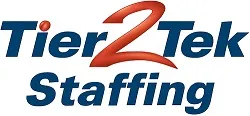In today’s fast-paced corporate world, the recruitment process often becomes a balancing act between speed and quality. Hiring managers face the challenge of filling positions quickly while ensuring that new hires are of the highest caliber. This comprehensive guide will delve into effective strategies for achieving this balance, tailored specifically for hiring managers who aim to optimize their recruitment processes.
Recruitment Process: Balancing Speed and Quality
The recruitment process often involves a trade-off between speed and quality. While quickly filling positions prevents operational delays, it’s crucial not to compromise on the caliber of the candidates. Understanding this dichotomy helps in strategizing a balanced approach, where neither speed nor quality is sacrificed. Effective recruitment, therefore, requires a methodical approach that respects both these aspects.
Need for Speed
Recognizing the importance of filling vacancies quickly to maintain operational efficiency and meet business goals.
- Internal Pressures: Understanding the push from within the organization to avoid productivity dips and manage workloads effectively.
- Operational Efficiency: Keeping business operations smooth and uninterrupted by timely filling of vacant positions.
Quality of Hire
Emphasizing the importance of hiring candidates who not only fulfill the job requirements but also align with the company culture and values.
- Long-term Organizational Success: Focusing on the bigger picture where quality hires contribute to the overall growth and development of the company.
- Skills and Cultural Fit: Ensuring that candidates bring the necessary skills and are a good fit for the team and company culture.
The Impact of a Streamlined Recruitment Process
Streamlining the recruitment process is a key factor in balancing speed and quality. An efficient process reduces time-to-hire while maintaining a high standard of candidate assessment. This involves optimizing each stage of recruitment, from the initial job posting to the final selection, ensuring that each step is as effective and concise as possible.
Efficiency in Recruitment
Implementing methods that expedite the recruitment process without compromising the quality of candidates. This includes automating administrative tasks, using applicant tracking systems, and simplifying the application process.
- Automating Administrative Tasks: Reducing time spent on paperwork and data entry, allowing more focus on candidate engagement and evaluation.
- Using Applicant Tracking Systems (ATS): Streamlining the sorting and filtering of applications, and efficiently managing candidate information.
Clear and Precise Communication
Establishing straightforward and consistent communication throughout the recruitment process. This involves setting clear expectations with candidates, providing timely feedback, and maintaining transparency about the recruitment stages.
- Setting Clear Expectations: Informing candidates about the job requirements, the recruitment process, and timelines to manage their expectations.
- Providing Timely Feedback: Ensuring candidates are kept informed about their application status, which enhances the candidate experience and employer brand.
Optimization of Each Recruitment Stage
Reviewing and refining each step in the recruitment process to ensure it contributes effectively to the selection of quality candidates. This includes writing precise job descriptions, conducting efficient screening processes, and implementing structured interviews.
- Writing Precise Job Descriptions: Crafting clear and detailed job descriptions to attract suitable candidates and reduce the number of unqualified applications.
- Conducting Efficient Screening Processes: Implementing effective screening methods such as skill tests, phone screenings, or video interviews to quickly identify top candidates.
Leveraging Technology for Efficient Recruitment

The integration of technology in recruitment has revolutionized the way hiring is done. AI and machine learning can automate and refine candidate screening, while applicant tracking systems (ATS) streamline the entire recruitment workflow. These technologies ensure a more efficient process, saving time without sacrificing the quality of hire.
- AI and Machine Learning: Utilizing advanced algorithms for efficient candidate screening.
- Applicant Tracking Systems: Streamlining workflow to enhance efficiency.
- Time Savings: Reducing manual effort and time spent on each recruitment stage.
Creating Effective Job Descriptions
The cornerstone of any recruitment process is an effective job description. It serves as the first point of interaction with potential candidates and sets the stage for attracting the right talent. A well-crafted job description is clear, concise, and reflective of the role’s requirements, ensuring that it appeals to the most suitable candidates.
- Clarity and Conciseness: Ensuring job descriptions are straightforward and to the point.
- Reflecting Role Requirements: Accurately depicting the responsibilities and qualifications needed.
- Attracting Suitable Candidates: Targeting the right talent pool through precise descriptions.
The Role of Social Media in Recruitment Process
Social media has become an indispensable tool in modern recruiting. Platforms like LinkedIn provide a vast pool of potential candidates, while Twitter and Facebook can be used for broader outreach and employer branding. These platforms enable recruiters to connect with candidates in a more informal and engaging way, broadening the scope of talent acquisition.
- LinkedIn for Recruitment: Leveraging professional networks to find suitable candidates.
- Twitter and Facebook: Using broader social platforms for outreach and branding.
- Engaging with Candidates: Creating a more personable recruitment experience.
Building a Talent Pool for Quick Hiring
Developing a talent pool is a proactive approach to recruitment. It involves creating a database of pre-vetted candidates who can be quickly tapped into when a new position opens. This strategy not only reduces the time-to-hire but also ensures a consistent quality of candidates, as they have already been assessed to some degree.
- Pre-Vetted Candidates: Maintaining a database of candidates who have already undergone initial assessment.
- Reducing Time-to-Hire: Quickly filling positions from the talent pool.
- Consistent Candidate Quality: Ensuring the pool consists of individuals who meet certain quality standards.
The Importance of a Structured Interview Process
A structured interview process is crucial for a fair and effective assessment of candidates. This approach standardizes the interview format, ensuring that each candidate is evaluated on the same criteria. It aids in reducing biases and allows for a more objective comparison between candidates, contributing to both speed and quality in decision-making.
- Standardized Format: Keeping the interview format consistent for all candidates.
- Reducing Biases: Ensuring a fair assessment process.
- Objective Comparisons: Facilitating easier decision-making by comparing candidates on the same criteria.
Integrating Candidate Experience into the Recruitment Process

The candidate experience is a vital component of the recruitment process. A positive experience enhances the company’s reputation, making it more attractive to high-quality candidates. This involves clear communication, respectful treatment, and a streamlined application process, ensuring that candidates feel valued throughout.
- Clear Communication: Keeping candidates informed at every stage of the recruitment process.
- Respectful Treatment: Ensuring candidates feel respected and valued.
- Streamlined Application Process: Making the application process smooth and user-friendly.
Using Data-Driven Decision Making in Hiring
Data-driven decision-making brings objectivity and precision to the recruitment process. By analyzing metrics such as time-to-fill, source of hire, and candidate conversion rates, hiring managers can make more informed decisions. This approach helps in identifying areas for improvement and in making strategic adjustments to balance speed and quality.
- Analyzing Recruitment Metrics: Using data to understand the effectiveness of different recruitment strategies.
- Identifying Improvement Areas: Pinpointing aspects of the process that need refinement.
- Strategic Adjustments: Making data-informed changes to enhance both speed and quality.
The art of balancing speed and quality in the recruitment process is integral to the success of any organization. A streamlined recruitment strategy, bolstered by technological advancements and a focus on clear communication, enables hiring managers to efficiently fill positions without compromising the caliber of the candidates.
This equilibrium not only enhances the immediate operational effectiveness but also contributes to the long-term prosperity of the company. By prioritizing both the urgency of filling roles and the importance of quality hires, organizations position themselves to thrive in an increasingly competitive business landscape, fostering a robust and dynamic workforce equipped to meet both current and future challenges.
Contact Us
Struggling to balance speed and quality in your recruitment process? Let Tier2Tek Staffing help you find the perfect candidates quickly without compromising on quality. Contact us today to discuss your hiring needs today.
Content reviewed and published by Tier2Tek Staffing Editorial Team .
